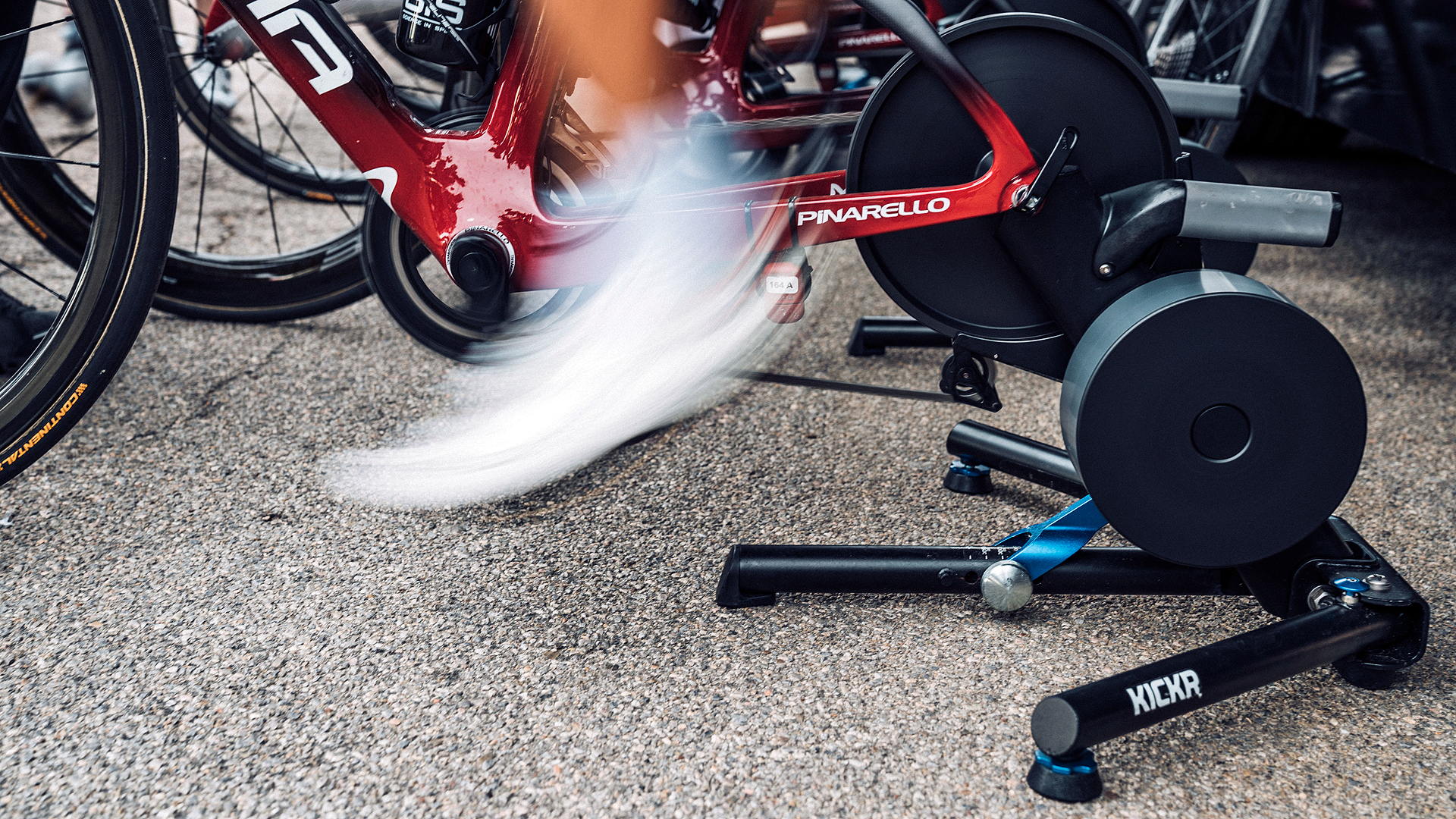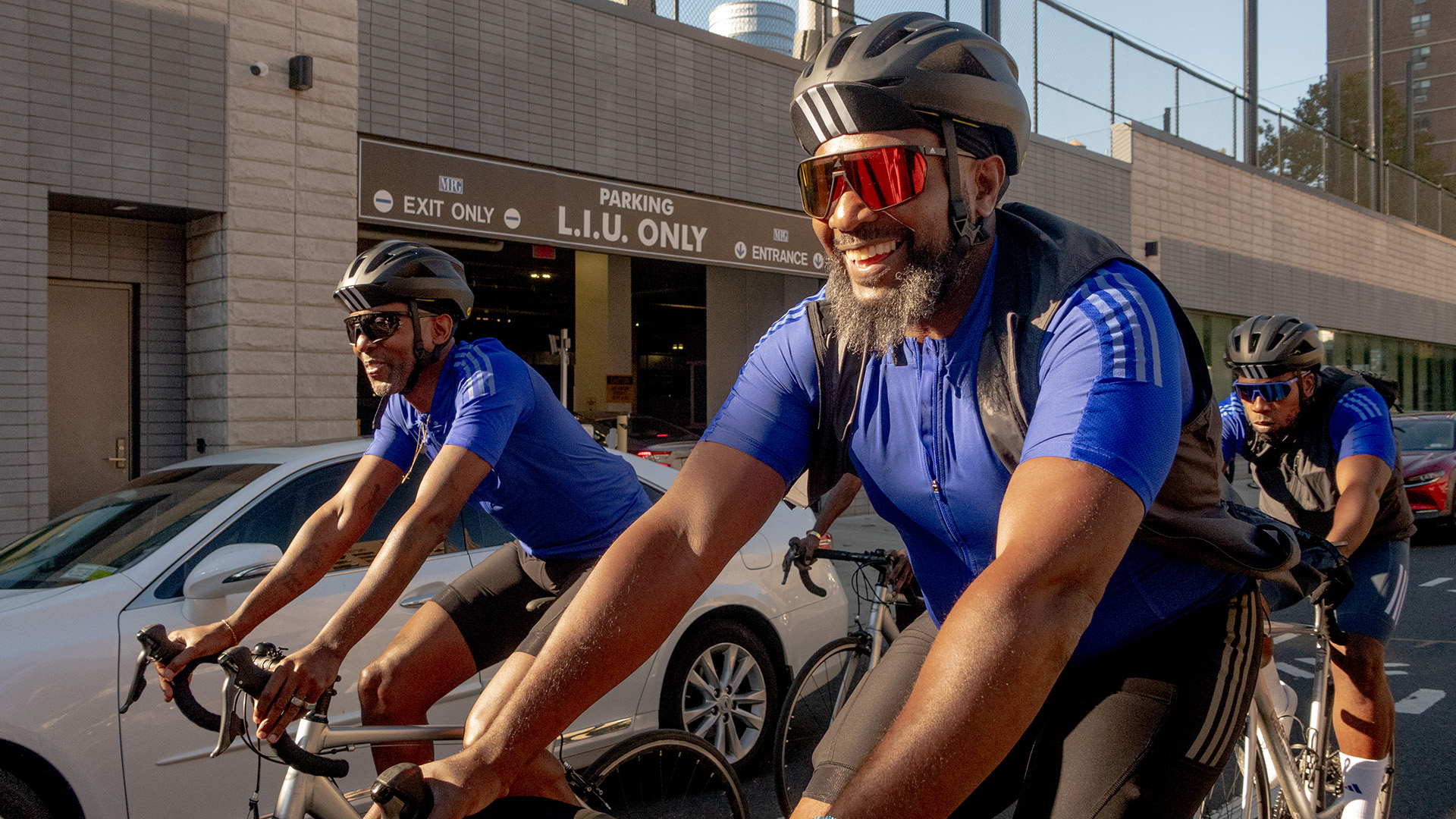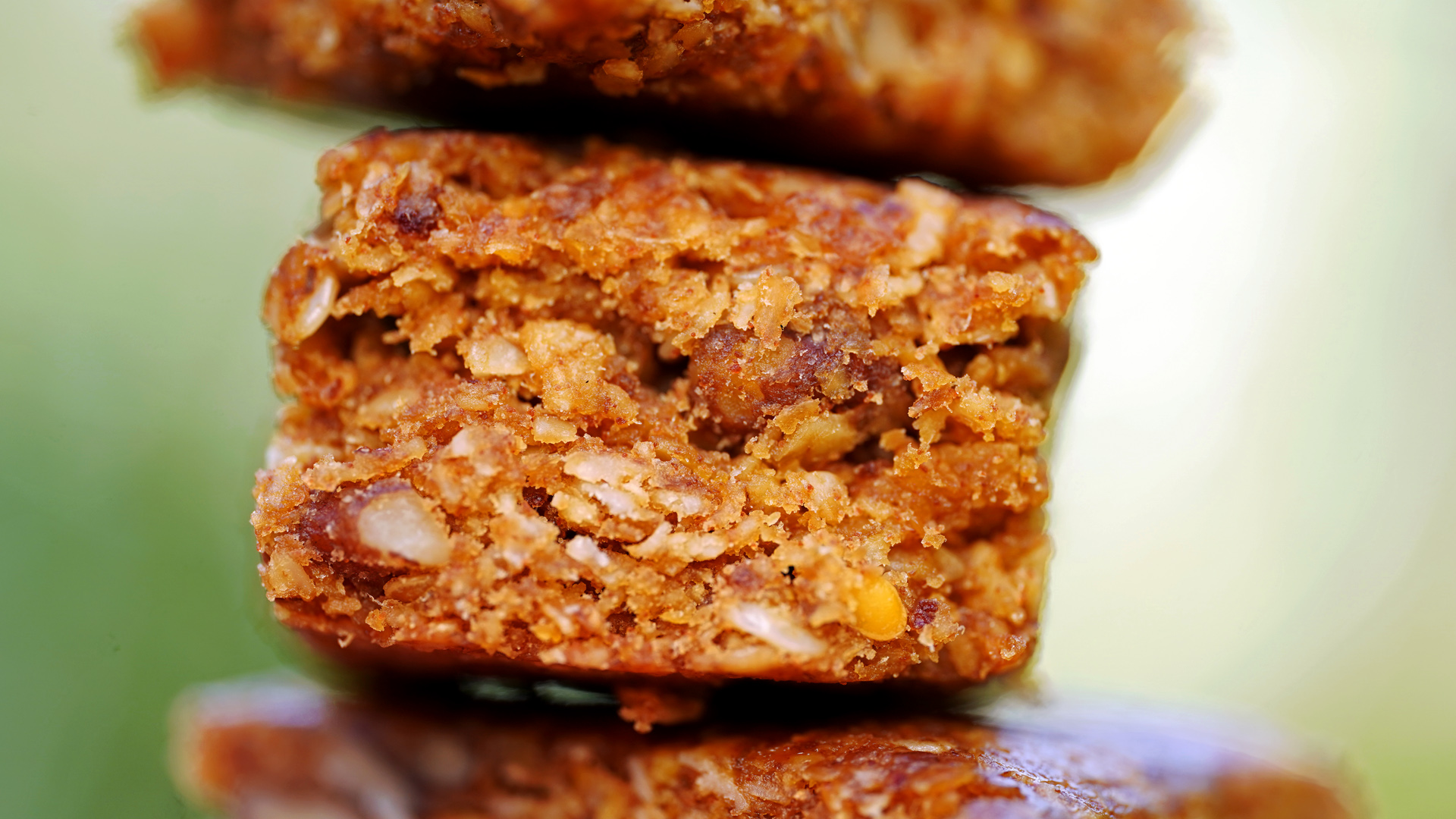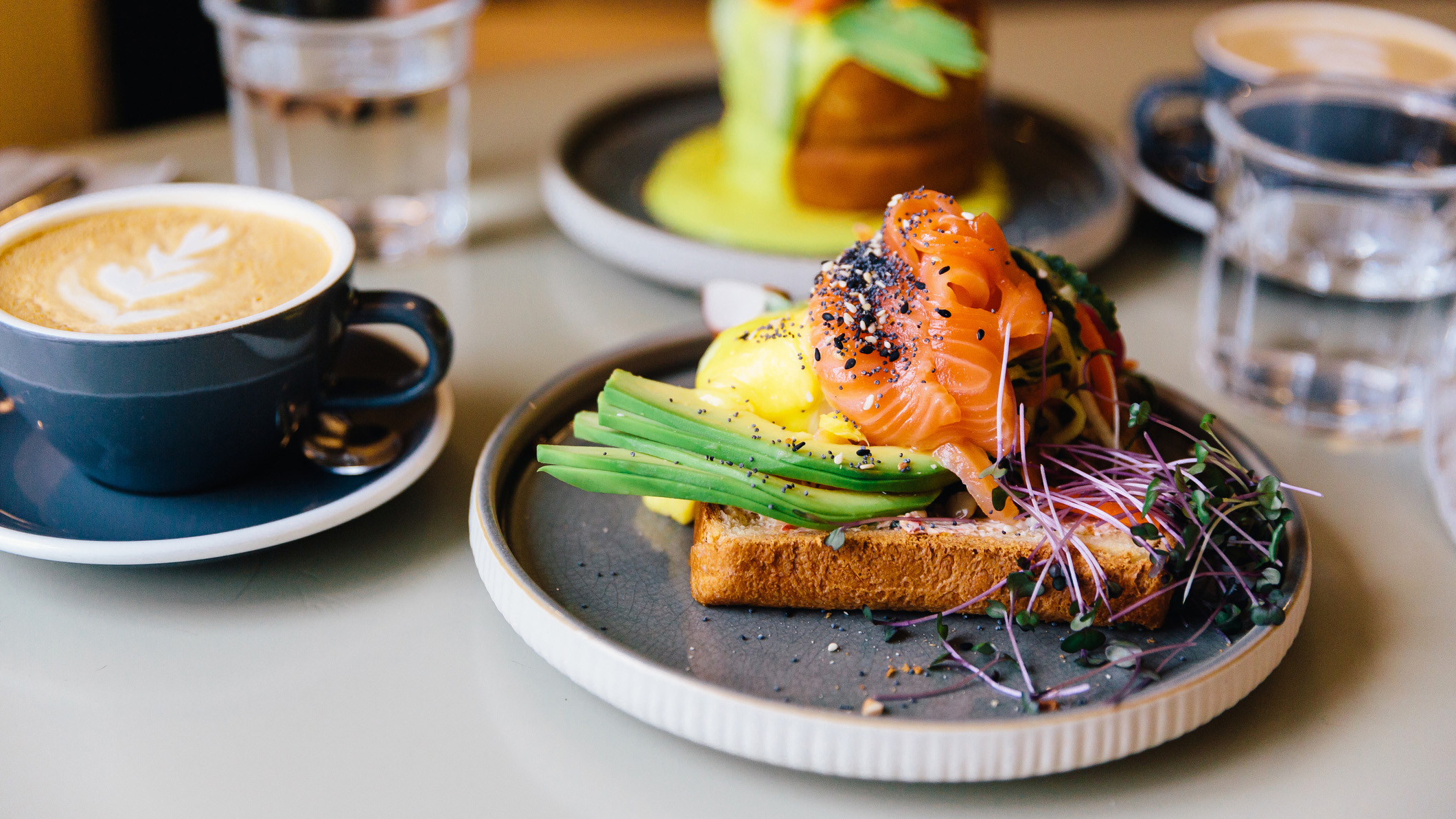
Being a professional cyclist is one of the most physically demanding jobs around. Training is a year-round pursuit where it’s common to spend 20-plus hours a week in the saddle of the best road bikes, and when they are racing – whether it’s a one-day event such as Paris-Roubaix or a three-week slog like Le Tour de France – it’s rare to ride less than 100 miles per outing.
As a keen runner, cyclist, and triathlete who has completed everything from marathons to multi-day bikepacking trips, I consider myself reasonably capable on two wheels. But my training log doesn’t even scratch the surface compared to someone who does it day-in-day-out for a job.
But that got me thinking. Sure, I’ll never make it to the pro peloton or be able to give up the daily grind to just ride my bike, but could I learn anything from the best in the business that applied to my own on- and off-bike fitness regime?
I was invited to Verbier by sunglasses brand SunGod (retailer link) in May to spend a few days with its WorldTour team partner, Ineos Grenadiers. While the likes of Geraint Thomas were competing in the Giro d’Italia, I was able to glean some information from the team’s support staff and riders, making some discoveries that would influence my riding back home. Here are my five takeaways from the trip.
1. Long-term planning
To date, I have had quite a sporadic approach to planning out my riding for the year. Sportives are undertaken at relatively short notice, and even if I do have a couple of months to prepare for a ride, I rarely follow a dedicated training plan.
The Ineos Grenadiers’ approach couldn’t be more different. Each rider will have a specific set of goals or races that they’re targetting, sometimes more than a year in advance (particularly if the Olympics is on the horizon). During the off-season, the team will create a schedule of races for the following year to ensure that each rider arrives at their target event in the best possible shape and form, while balancing the wider team’s overall goals.
Although I won’t be targeting an Olympic gold in 2024, I will look to replicate this approach in my training next year, working out my key target sportives and races in November and adding in strategically placed stepping stones to test me along the way.

2. Train for time, not for distance
Despite shunning training plans for cycling, I have set myself a weekly and annual riding target on Strava (150km and 5,000km, respectively). While they’re quite arbitrary figures, I’ve found that having a regularly resetting goal can help motivate you to get out on your bike – particularly during the wet winter months – while it’s nice to work towards a bigger goal that equates to roughly 2.5 Land’s End to John O’Groats.
Pro cyclists take a different approach. Instead of tracking training volume by distance, they opt for duration. “It's too hard to replicate the distance,” explains the rider Ben Swift. “We'd be out there for most of the day, especially if training for [298km one-day race Milan-]San Remo, for instance.” Within their training hours is a mixture of long, aerobic-focused rides and high-intensity sessions that, when combined, ensure they are maximising all of their training time on the bike – meaning there are no wasted minutes.
As someone who can only dedicate a maximum of 10 hours per week to training around a full-time job and family commitments, training to time – rather than purely logging distance – makes a lot more sense when trying to get bang for your buck.

3. Nailing on-bike nutrition
Refuelling can be one of the most enjoyable parts of a cycle ride – particularly if it includes a stop at a nice cafe and a hearty slice of cake. But nutrition, and carbohydrate intake in particular, can also make or break a day’s racing for a professional rider.
To provide energy for the power required to compete in a three-week Grand Tour race like the Giro d’Italia, riders must consume, on average, 9,000-10,000 calories per day. While some of this can be taken care of by breakfast and dinner, a lot has to be consumed when on the bike.
To meet the demands, Ineos Grenadiers’ nutritionist Aitor Viribay says that riders try to consume 120g of carbohydrates per hour of riding. “That's actually a challenge for the gut – it would be [the equivalent of] six bananas per hour.”
Rather than chomping down on a banana every 10 minutes, riders “use gels and very concentrated drinks” to get the required macronutrients while also keeping their stomachs light – particularly important when embarking on a long, Alpine climb at speed.
Rather than rely on the odd banana or bar of Soreen, I’ll now go into training rides and events with more of a nutrition strategy, consuming energy gels and bars little and often to keep my carbohydrate levels topped up and minimise the risks of hitting the dreaded wall.

4. Post-race recovery
Even when not in the saddle, the life of a professional cyclist sounds like an eating contest. On the average day of a three-week race, Viribay says they can expect to eat “about 8g-10g per KG of carbohydrates”, while on a mountain stage, this can double, equating to “more than 2kg of carbohydrates”. Each rider’s energy expenditure and metabolic demands are measured during the ride, and Viribay sets about planning immediate recovery through nutrition, while also adapting fuelling strategies for the next day.
“We've got different protocols based on the energy demands of a stage,” he explains. “There are mainly three scenarios – low, medium, high. Based on that, we have a protocol of what the menu can be. [Each rider has] got individual plans on the quantity, the extra grams of pasta, rice, potato, and protein that they have to eat.”

5. Clothing
Ineos Grenadiers (formerly Team Sky) brought marginal gains to the world of professional cycling, including improvements such as personalised mattresses for each rider that are moved between hotels every night and even a member of support staff who recommends the tint of sunglasses lens depending on the weather conditions.
“I think it's just trying to think about all the details and pushing it to the limit so that the riders don't have to think about anything else other than riding,” says Ineos Grenadiers’ performance operations coordinator Clement Briscadieu. “We have a chef and nutritionist on the race; we have everything logistically with the weather and clothing; they all add up to making a big difference.”
A team of support staff aims to give riders new clothing from the roadside mid-race to keep them dry and comfortable, while there is a variety of different options available depending on the conditions. “We have different materials being used for different conditions – whether it's cold, very rainy, or just in the middle.”
Viribay adds that clothing choice has a knock-on effect on nutrition, too, with the wrong kit requiring “extra effort on delivering that energy”. While my cycling sunglasses collection is limited in terms of lens tints, it’s an important reminder to check the weather before each ride and pick the best cycling jersey and best cycling shorts for the task at hand.







